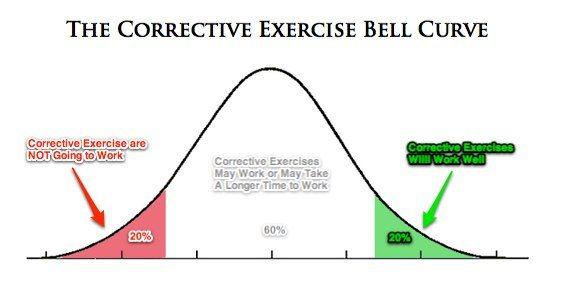Recently, I have seen dozens of social media posts with “advanced” hip mobility drills that made me stop and think…
Should we actually be seeking to perform these advanced variations?
I would argue most people still need the basics, and should incorporate just a handful of more simple drills as the foundation of their mobility drills.
The internet is famous for sensationalizing the drills that look “fancy” rather than the ones that are likely the most effective. It’s probably another case of the Pareto Principle, where 80% of the drills seen online should only be performed 20% of the time, and conversely, 20% of the drills seen online should be performed 80% of the time! Heck it may be even less than that when it comes to hip mobility.
To make matters worse, the more advanced hip mobility drills are probably inappropriate for most people. In my experience, limitations in hip mobility seem to be more related to the individuals unique anatomy, boney adaptations, and alignment rather than simple soft tissue limitations. So, forcing hip mobility drills through anatomical limitations is just going to cause more impingement and issues with the hips, rather than helping.
Sometimes less is more.
My Favorite Hip Mobility Drills
I wanted to share my favorite hip mobility that I use with most of my clients. I think you should really focus on these hip mobility drills before proceeding to more advanced variations. If these don’t do the trick, it’s probably best that you seek out a qualified movement specialist to assess the reason behind you hip mobility limitations, rather than forcing more drills.
Quadruped Rockbacks
The first drill is a quadruped rockback. This is one of my favorite drills for the hips, and feels great to loosen up the adductors and hip joint into flexion. Plus, I do these barefoot to get more dorsiflexion and great toe extension.
Adductor Quadruped Rockbacks
The adductor quadruped rockback is a variation of the rockback that involves straightening out one hip. This takes away a little bit of the hip flexion benefit, but enhances the effect on the adductors. Performing this on both sides is the best of both worlds.
True Hip Flexor Stretch
The true hip flexor stretch is probably the most fundamental hip mobility drill we should all be performing. I started calling it the “true” hip flexor stretch because the more common versions of this do not lock in the posterior pelvic tilt and just end up torquing the anterior capsule.
Posterior Hip Stretch
The posterior hip stretch feels great on the glutes and hits the posterior hip area, which is often tight. Many people feel like the can get into a hip hinge much better after this drill.
Figure 4 Stretch
The posterior hip is a complicated area of muscles, I often pair the figure 4 stretch with the posterior hip stretch above to get different areas. For me, I simple go by the feedback from my client on what feels more effective for them.
Spiderman
The Spiderman hip mobility drill is likely the most advanced of this list, which is why I have it last. This is something I don’t always perform right away, but is a goal of mine to integrate with everyone eventually. This requires more hip mobility that the others, so acts as a nice progression to put these all together.
How to Get Started with Hip Mobility Drills?
So wondering how to get started? Start with the quadruped rockbacks and hip flexor stretch. Those two are very foundational and will be the most impactful for most people. Once you get those down, progress to the posterior hip stretch and figure 4 to hit more of the posterior aspect of the hip. Lastly, progress to the Spiderman drill.
I honestly don’t think you need much more than that, and if you seek to get too aggressive with hip mobility drills, you often make things worse.





